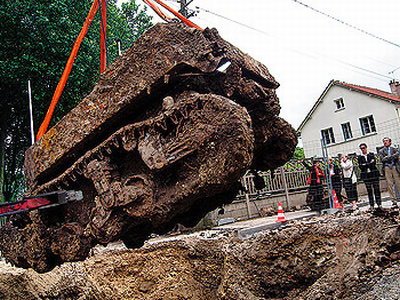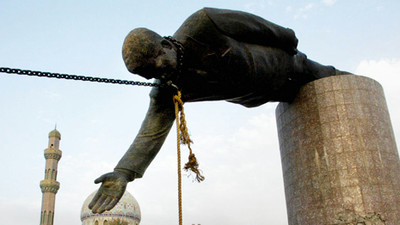Research that there is a common pattern between the death pattern of one of the most dangerous occupations `` Roman Emperor '' and the failure rate of the machine

by
Studies have shown that in the Roman Empire, the culture was very developed and the governing emperors also lived a rich life, while the emperors had a very high probability of violent death . Furthermore, as a result of an analysis conducted by aerospace engineers from the viewpoint of reliability engineering , a common pattern was found between the time before the Roman emperor died and the time before the machine failed.
Statistical reliability analysis for a most dangerous occupation: Roman emperor | Palgrave Communications
https://www.nature.com/articles/s41599-019-0366-y
What Do Roman Emperors and Engineering Have in Common? | Technology Networks
https://www.technologynetworks.com/tn/news/what-do-roman-emperors-and-engineering-have-in-common-328789

A study of 69 Roman rulers from the first Roman Emperor Augustus to Theodosius I showed that 43 emperors, 62% of the total, had died from violence. It is assassination that is common in 'death by violence', but it is said that suicide and war death were also included.

Historical books usually describe a person's death as an individual event, and it is not known whether there is a common pattern. So Joseph Saleh, an aerospace engineer at Georgia Tech, looked at how long the Roman Emperor's reign lasted before his death and looked for patterns.
According to Saleh, such statistical methods are used to test the reliability of components in the engineering field. When Saleh modeled the general length of the Roman emperor from inauguration to death, he found a similarity between `` the seemingly random failure of components in engineering '' and `` the seemingly random death of the emperor '' It was discovered.
'In engineering, the reliability of a component or process is defined as the 'probability that it is still moving at a particular time.' The time to failure of a process or component is called the

by
According to Saleh, the Roman emperor is very likely to die violently in the year of his inauguration. This is similar to the early failure of a component in engineering, often indicating that the component is not functioning as intended in the early days, but the Roman emperor also found that in his first year of service he was asked Cannot play a role that can be fulfilled. ' The risk of death stabilizes for the next eight years, but the risk rises again 12 years after taking office. This seems to be similar to the pattern in which the failure rate of components increases due to fatigue, corrosion and wear.
The graph of the Roman Emperor's death risk looks like a bathtub curve, but Saleh said the graph was 'a pattern commonly found in mechanical and electrical components.'

'It is very interesting that the seemingly random violent death of the Roman emperor can be captured by a statistical model widely used in engineering. Each event, by itself, is random. It could indicate that there was a fundamental process to determine the time to death, 'said Saleh. On the other hand, the historical information on which this study was based can be inconsistent, and the literature may describe different causes of death. Researchers believe that further research could analyze why the Roman emperor died violently, as well as the patterns underlying other historical events.
In addition, this paper was taken up by overseas media as 'the most geeky research in 2019'.
Study: Roman emperor violent deaths mirror mechanical parts
https://www.fastcompany.com/90447258/nerdiest-study-of-2019-reveals-a-remarkable-pattern-in-the-violent-deaths-of-roman-emperors

Related Posts:
in Note, Posted by darkhorse_log







